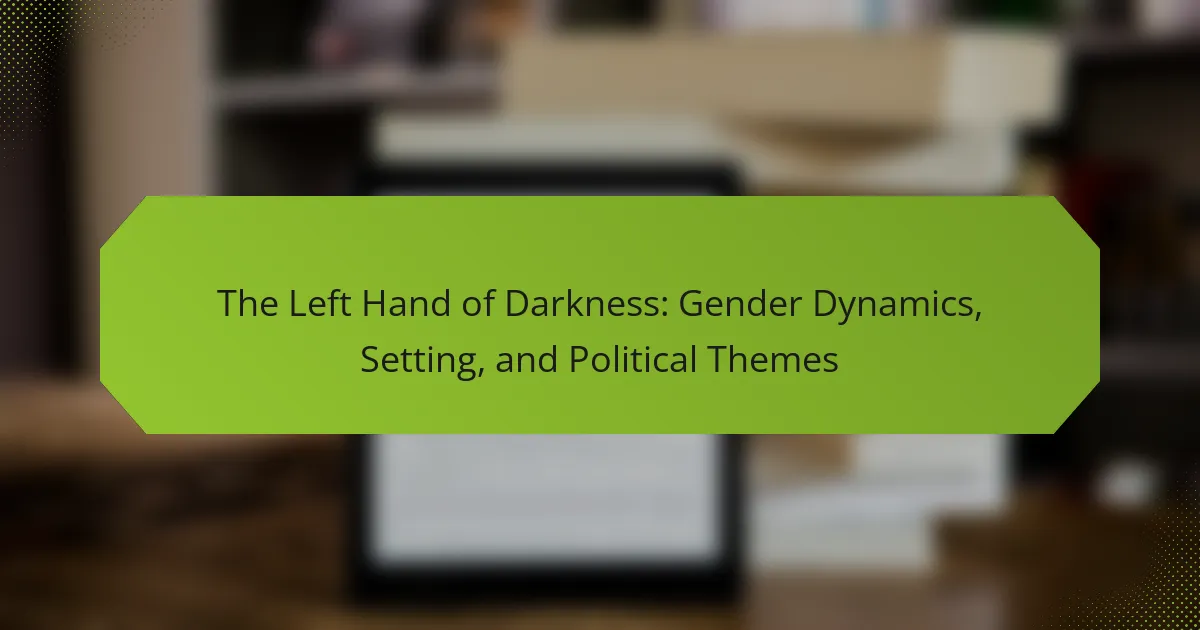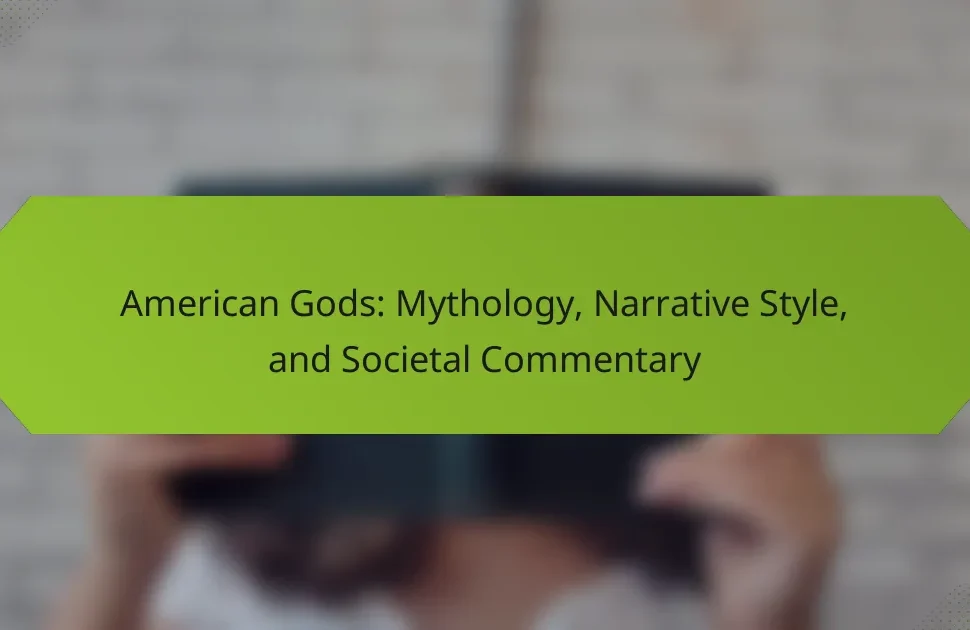“The Left Hand of Darkness” challenges traditional gender norms through its exploration of gender fluidity and political themes. It examines the unique setting of Gethen and its impact on identity and relationships. The narrative highlights how societal constructs shape personal experiences and the complexities of cooperation and division among cultures. Through its ambisexual characters, the novel prompts a reevaluation of the interplay between identity and political ideologies.

How does gender fluidity manifest in The Left Hand of Darkness?
Gender fluidity in “The Left Hand of Darkness” manifests through the androgynous nature of its inhabitants, who can shift between male and female identities. This fluidity challenges traditional gender norms and emphasizes the social constructs surrounding gender. The novel explores how these dynamics influence relationships, politics, and societal roles, highlighting the complexity of identity in a unique setting. Such themes encourage readers to reconsider their understanding of gender as a binary concept.
What are the cultural implications of ambisexuality in the narrative?
Ambisexuality in “The Left Hand of Darkness” challenges traditional gender norms and promotes fluidity in identity. This narrative explores how societal structures shape perceptions of sexuality and relationships. The absence of fixed gender roles fosters deeper connections among characters, highlighting the cultural implications of ambisexuality. As a result, the story encourages readers to reconsider their own views on gender and sexuality, emphasizing inclusivity and understanding.
How do gender roles influence character dynamics?
Gender roles significantly shape character dynamics in “The Left Hand of Darkness.” The novel explores how the androgynous inhabitants challenge traditional gender expectations, affecting relationships and political interactions. Characters navigate a society where gender fluidity alters perceptions of power and identity. This unique attribute fosters complex alliances and conflicts, revealing the profound impact of gender on social structures and personal connections. As a result, the narrative invites readers to reconsider their understanding of gender and its influence on human behavior.
What is the significance of the protagonist’s perspective on gender?
The protagonist’s perspective on gender in “The Left Hand of Darkness” is significant as it challenges traditional binary views. Genly Ai’s observations reveal the fluidity of gender roles among the Gethenians, who embody both masculine and feminine traits. This perspective highlights the impact of social constructs on identity and relationships. As a result, the narrative encourages readers to reconsider their own perceptions of gender, emphasizing that it is shaped by cultural context rather than strictly biological factors. This unique attribute of the Gethenian society serves to deepen the exploration of political themes and human connection throughout the novel.

What role does the setting play in shaping the story’s themes?
The setting in “The Left Hand of Darkness” is crucial for exploring its themes of gender dynamics and political structures. The planet Gethen, with its harsh climate and unique social organization, shapes characters’ interactions and societal norms. This environment challenges traditional gender roles, as inhabitants can change gender, emphasizing the fluidity of identity. The stark landscapes reflect the isolation and political intrigue, reinforcing themes of cooperation and division among cultures. As a result, the setting becomes a character itself, influencing plot development and thematic depth.
How does the planet Gethen reflect its inhabitants’ social structures?
The planet Gethen reflects its inhabitants’ social structures through its unique gender dynamics and political themes. Gethen’s inhabitants, known as Gethenians, possess a fluid gender identity, which shapes their social interactions and power dynamics. This fluidity leads to a society where traditional gender roles are absent, allowing for a more egalitarian political structure.
The absence of fixed gender roles means that relationships are often based on mutual respect and partnership rather than hierarchical dominance. As a result, Gethen’s political landscape is characterized by consensus and collaboration, reflecting the balance of power among its people.
Moreover, the harsh climate of Gethen influences its social structures, as survival necessitates cooperation and adaptability. This environment fosters a culture that values collective well-being over individual ambition, further reinforcing the interconnectedness of its inhabitants.
In summary, Gethen’s unique gender dynamics and challenging environment create a society where social structures emphasize equality, cooperation, and mutual support, showcasing a distinct reflection of its inhabitants’ values and political themes.
What environmental factors influence the political landscape?
Environmental factors significantly shape the political landscape in “The Left Hand of Darkness.” The planet Gethen’s harsh climate creates unique social structures and influences gender dynamics. The prolonged winters foster communal living, impacting political alliances. Additionally, cultural norms surrounding gender fluidity challenge traditional political roles, leading to a nuanced exploration of power and identity. These elements intertwine, resulting in a distinctive political commentary that reflects the interplay between environment and governance.
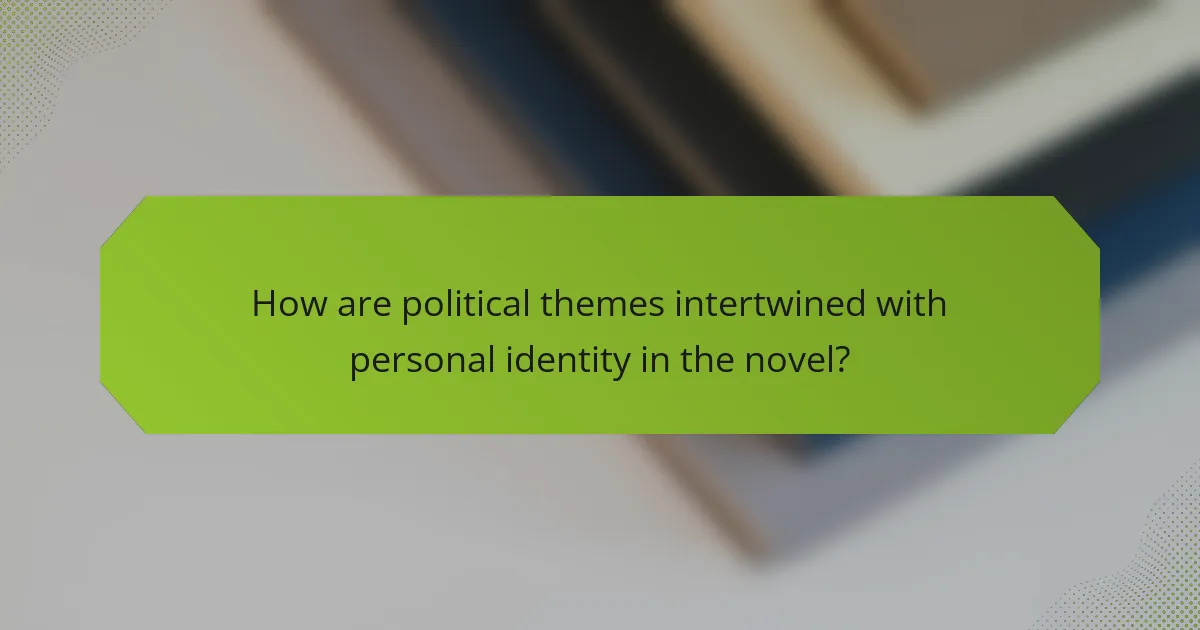
How are political themes intertwined with personal identity in the novel?
Political themes in “The Left Hand of Darkness” are deeply intertwined with personal identity, reflecting how societal structures shape individual experiences. The novel explores gender dynamics, showcasing how the ambisexual inhabitants of Gethen challenge traditional notions of identity. This fluidity emphasizes the impact of political ideologies on personal relationships and self-perception. As characters navigate loyalty and betrayal, their identities are molded by the prevailing political landscape, illustrating the complex interplay between the individual and the state. The story ultimately reveals that personal identity cannot be separated from the broader political context, highlighting the significance of social constructs in shaping human experience.
What are the implications of the struggle for power among different factions?
The struggle for power among different factions in “The Left Hand of Darkness” highlights the complexities of political dynamics and gender roles. This conflict reveals how power shapes relationships and societal structures. The interplay between the dominant and marginalized factions illustrates themes of loyalty, betrayal, and the quest for identity. As a result, the narrative critiques traditional gender binaries and emphasizes the fluidity of power. The unique political landscape of Gethen serves as a backdrop for these themes, showcasing how the struggle for dominance affects both individuals and communities.
How does the concept of loyalty affect political alliances?
Loyalty significantly influences political alliances by shaping trust and cooperation. In “The Left Hand of Darkness,” loyalty is tested through gender dynamics and cultural differences, impacting political strategies. The unique traits of the characters demonstrate how loyalty can either strengthen alliances or lead to their downfall. As a result, understanding loyalty is crucial for analyzing political themes within the narrative.
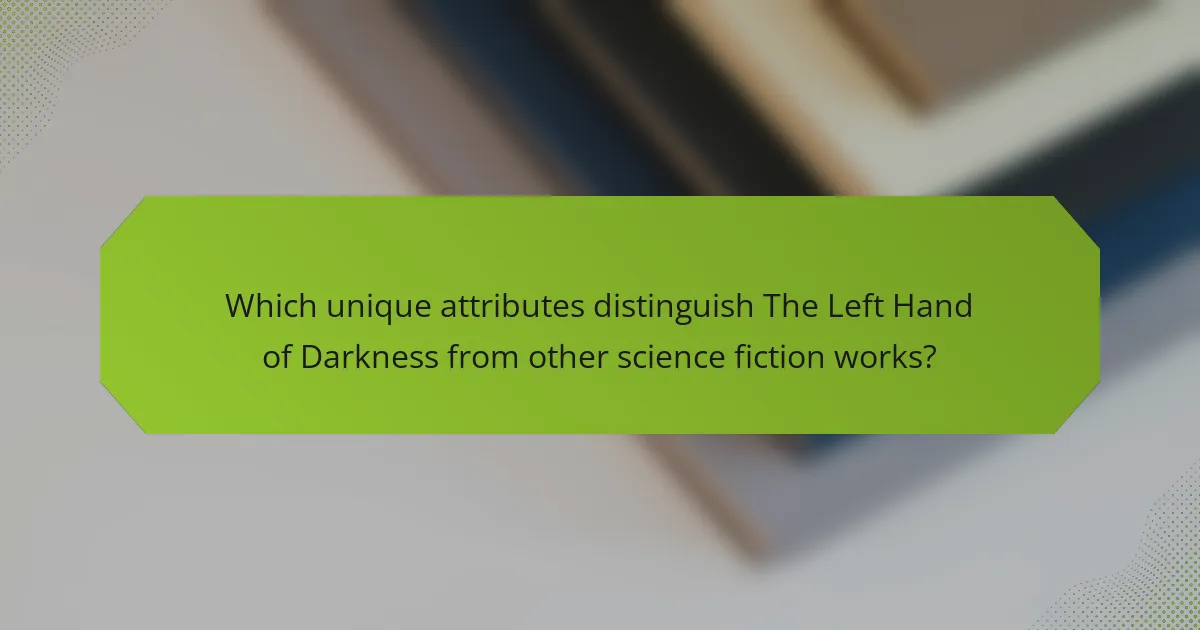
Which unique attributes distinguish The Left Hand of Darkness from other science fiction works?
“The Left Hand of Darkness” stands out due to its unique exploration of gender fluidity and political themes. The novel features ambisexual characters, challenging traditional gender roles. Its setting on the planet Gethen emphasizes a harsh, cold environment that shapes social dynamics. The intricate political landscape explores alliances and betrayals, reflecting real-world geopolitical issues. These elements collectively create a distinct narrative that distinguishes it from other science fiction works.
How does the narrative’s structure challenge traditional storytelling?
The narrative structure in “The Left Hand of Darkness” subverts traditional storytelling by employing a unique perspective on gender and politics. It challenges linear plots and conventional character arcs, instead focusing on the fluidity of identity and relationships. This complexity reflects the protagonist’s journey through a world where gender is not binary, emphasizing themes of connection and understanding over conflict. The use of multiple viewpoints further enriches the narrative, allowing readers to explore diverse experiences and cultural contexts. As a result, the story invites deeper engagement with its themes rather than adhering to familiar storytelling tropes.
What are the rare literary devices used to explore complex themes?
Rare literary devices in “The Left Hand of Darkness” include the use of paradox, which reveals the complexities of gender dynamics, and the unreliable narrator, enhancing the political themes. These devices deepen the exploration of setting and challenge readers’ perceptions. Paradox illustrates conflicting ideas about identity, while the unreliable narrator prompts critical engagement with the narrative. Such techniques foster a nuanced understanding of the intricate relationships between characters and their environment.
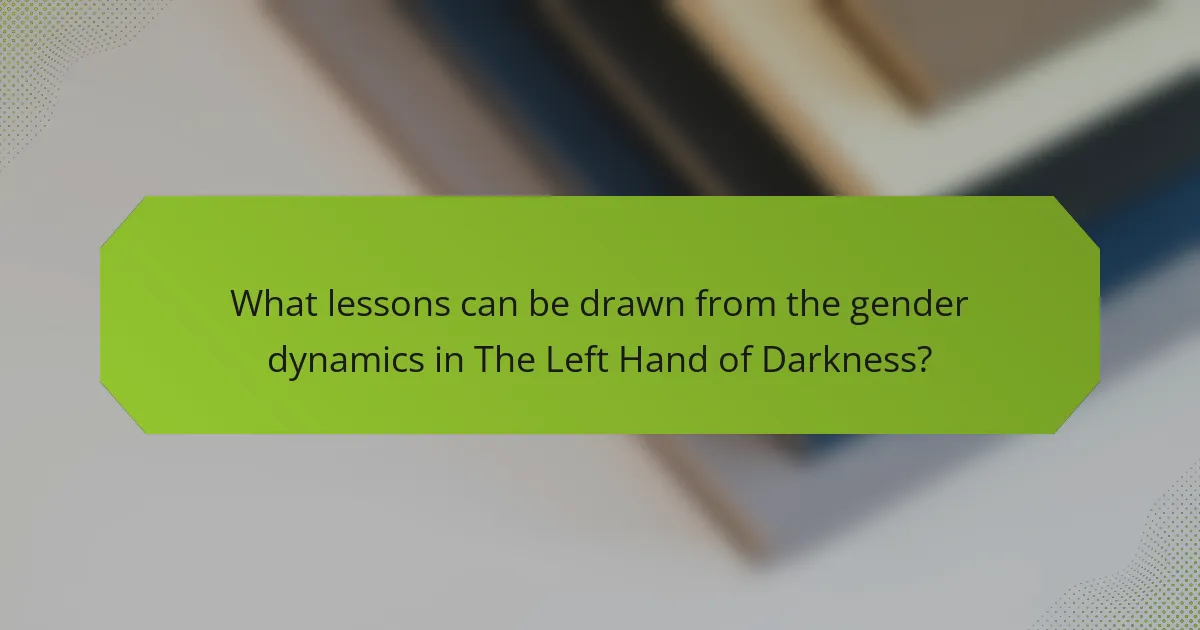
What lessons can be drawn from the gender dynamics in The Left Hand of Darkness?
The gender dynamics in The Left Hand of Darkness reveal significant lessons about societal constructs and identity. The novel illustrates how gender roles are shaped by cultural context rather than biological determinism. Characters like Genly Ai and Estraven navigate a world where gender is fluid, challenging traditional notions of masculinity and femininity. This exploration encourages readers to reconsider the impact of societal expectations on personal identity and relationships. Additionally, the narrative emphasizes the importance of empathy and understanding across differences, highlighting that collaboration transcends gender boundaries.
How can understanding these dynamics enhance contemporary discussions on gender?
Understanding these dynamics enriches discussions on gender by highlighting the fluidity of identity and social constructs. “The Left Hand of Darkness” illustrates how gender roles can be reshaped, challenging binary norms. This perspective fosters inclusivity and encourages dialogue about diverse gender experiences. By examining political themes through this lens, contemporary conversations can address power dynamics and societal expectations more effectively. Such insights promote empathy and understanding, essential for progressive discourse on gender.
What best practices can be applied when analyzing gender in literature?
Analyzing gender in literature, particularly in “The Left Hand of Darkness,” involves several best practices. First, examine the portrayal of gender fluidity and its impact on societal norms. This novel challenges binary gender constructs, highlighting the unique attribute of ambisexuality among its characters. Second, consider the setting’s influence on gender roles, as the planet Gethen’s harsh environment shapes social structures. Third, explore political themes related to gender, such as power dynamics and alliances, which reveal root attributes of gendered interactions. Lastly, incorporate historical and cultural contexts to deepen understanding, as these factors often affect gender representation in literature.
